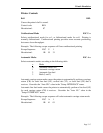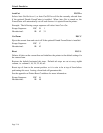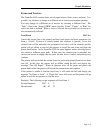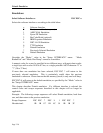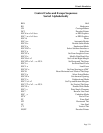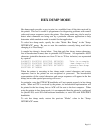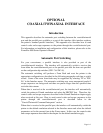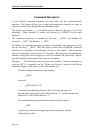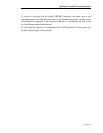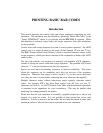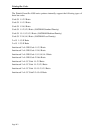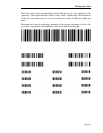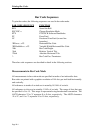Page A-1
OPTIONAL
COAXIAL/TWINAXIAL INTERFACE
Introduction
This appendix describes the automatic port switching between the coaxial/twinaxial
port and the parallel port available as a part of this interface (this interface replaces
the printer's standard parallel interface). This appendix also describes how to send
control codes and escape sequences to the printer through the coaxial/twinaxial port.
For information on installation and configuration of this interface, please refer to the
FormsPro 4000 Series Operator's Manual.
Automatic Port Switching
For your convenience, a parallel interface is also provided as part of the
coaxial/twinaxial interface. The interface will automatically switch to receive data
from either the coaxial/twinaxial port or the parallel port after the time out specified
on the configuration dip switches (SW1-7 & SW1-8).
The automatic switching will perform a Form Feed and reset the printer to the
appropriate configuration as described in the following paragraphs each time a switch
occurs. Some of the extra form feeds may be suppressed by selecting "FF at TOF:
No" in the Interface menu. The automatic switching may cause unexpected results if
escape sequences are being used and there are pauses longer than the specified time
out in the data stream.
When data is received at the coaxial/twinaxial port, the interface will automatically
switch the printer to Printek emulation and select the EBCDIC font. Therefore, the
control codes and escape sequences described in the Printek Emulation chapter apply
when received at this port. How to send control codes and escape sequences to the
printer through the coaxial/twinaxial port is described below in the
"Coaxial/Twinaxial Command Interpreter" section.
When data is received at the parallel port, the interface will automatically switch the
printer to the default emulation selected in the Interface menu and select the default
parameters set for the current form in the Forms menu. In this case, the control codes
and escape sequences described in the chapter for the default emulation apply.



